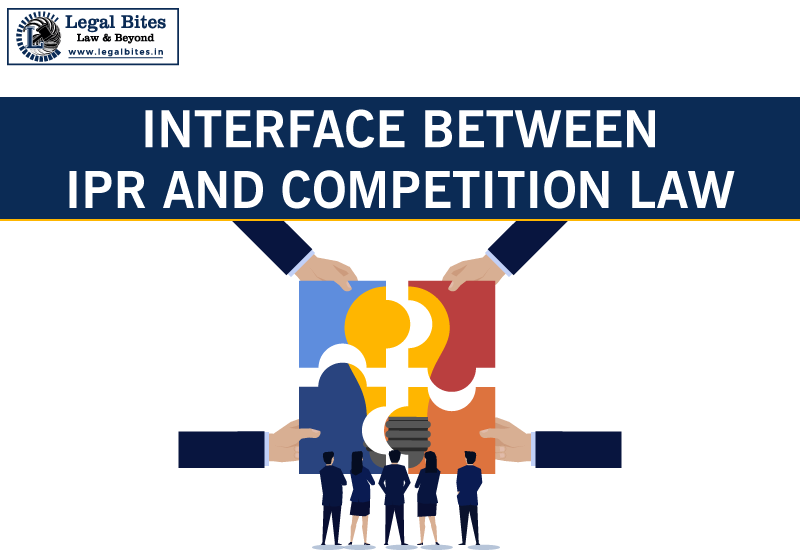Combinations: Concept, Regulation and Adverse Impact
The article provides insight into the Competition Law and how the combinations are regulated under the statute.;

The article provides insight into the Competition Law and how the combinations are regulated under the statute. It is important to understand the effect of the Competition Act, 2002 on all the deals related to the restructuring of the corporate world. The article covers the regulation of combinations and the adverse impact on the competition produced due to such combinations. Introduction The game of mergers and acquisitions got intertwined with the concept of combinations once it...
The article provides insight into the Competition Law and how the combinations are regulated under the statute. It is important to understand the effect of the Competition Act, 2002 on all the deals related to the restructuring of the corporate world. The article covers the regulation of combinations and the adverse impact on the competition produced due to such combinations.
Introduction
The game of mergers and acquisitions got intertwined with the concept of combinations once it was referred into the Competition Act, 2002. It becomes important for the professionals practising deals regarding mergers and acquisitions to be aware of the consequences of the Competition Act on these deals. The corporate world is swept by a wave of restructuring. From the exploration of oil to banking and generation of power to telecommunication, all the companies are forming a group like the one never seen before in history.
Not only is this reform seen, but it was also seen that the transformation in the old industries is a requirement, and the biotechnology and e-commerce companies are being exploded.
I. Types of Combinations
The merging of two or more enterprises is a regular feature of the corporate world via any of the modes prescribed in Section 5 of the Competition Act, 2002.
1. Mergers
The definition of mergers is not provided by either the Companies Act, 1956 or the Income Tax Act, 1961. However, the explanation of the term has been provided by the Companies Act of 2013, even though the Act has also refrained from providing the definition of the term. When two or more entities combine into a big entity, this phenomenon is known as a merger[1], by virtue of which not only do the assets and liabilities of both organizations get added up, but the business of both entities also becomes one.[2]
The principal idea behind mergers and acquisitions or any other type of combination between the various market players is that such a combination will help them acquire fast business growth in the corporate world. Competitive position and the improvement in the quality of the products might help the businesses to grow fast.
There can be a lot of objectives of mergers, such as access to different markets or sectors, acquisition of technology, economies of scale and so on. Normally when a merger takes place, the entity which has merged with other entity ceases to exist, and both entities would serve as a single entity in the market.
2. Acquisitions
When a person purchases the share capital in such a way as to control the interests enunciated with the all or substantial number of shares or assets or liabilities of the target entity, such an agreement is known as acquisition.[3] This is also known as Takeover. There can be a hostile or friendly takeover, which is entered into between the offering entity and the majority of the shareholder of the acquiring entity. This is done either by purchasing the shares that are available in the open market or by offering to the whole body of shareholders for the acquisition of the shares of the target company.
There can be two ways to acquire a company: acquiring the liabilities and assets of the target company and acquiring the shares of the target company. When the assets and liabilities are acquired, such acquisition is basically a going concern. The Income Tax Act refers to a slump sale to such acquisition or transfer.[4]
It might help the acquirer to get more amount of control in the target company in comparison to the stake of the acquirer in the target. For instance, there is a possibility that there are 40% of the shares of the target company held by the acquirer but it enjoys veto rights, management rights or voting rights that are disproportionate to its shareholding.
Demerger is another way of acquisition. This is the agreement wherein a single big entity breaks down into two or more small entities. Such a form is the reciprocal of the merger. When a company has branches in more than one industry, it might decide to spin off or hiving off or cutting off a branch to form a new entity. Generally, in such scenarios, the shares of the original entity only become the shareholders of the newly formed entity.
II. Regulation of Combinations
The provisions dealing with the regulations of combinations have been looked into by Section 6 of the Act. It necessitates issuing a notice containing the details of the proposed combination to the Commission with the fees prescribed within a time limit of 30 days from the date the Board of Directors approved the proposal of merger or amalgamation or execution of any other document of acquisition.[5]
The time span prescribed by the statute for the combination to take place is 210 days. The process will commence only after providing notice to the commission or from when the commission has passed the order with respect to that notice, whichever is earlier.[6] The Act has also provided some exceptions that cover the bank, foreign institutional investor, venture capital fund or financial institutions relating to any investment agreement or any loan agreement covenants.[7]
III. Threshold for Combinations under the Act
India qualifies as one of those economies in the world that are growing at a very fast pace. This growth is determined only when both the inorganic and organic enterprises grow. It is not advised to review all the deals with respect to mergers and acquisitions, and it is not practically feasible to do the same. It can be presumed that when there is a small enterprise, it will not be able to create an appreciable adverse impact on the competition in the market.
After consulting the Commission, the Government must revise the threshold limits provided by the Act every two years. This has to be done by issuing a notification for the same and the premise for revising these limits has to be based on the fluctuations that can be noticed in the exchange rates of the foreign currencies or rupee or the changes that are reflected in the Wholesale Price Index.[8]
IV. Evaluation of Appreciable Adverse Impact on the Competition
For creating any impact, it is essential ingredient to have an agreement between two enterprises or individuals in the market.[9] Such an agreement should be capable of producing an appreciable adverse effect on the competition prevailing in the Indian markets. It is deemed as if any agreement that falls under the ambit of Sections 3 (3) & (4) of the Competition Act, 2002, will be contrary to the principle envisaged in Section 3 (1) of the Competition Act, 2002 and shall be considered void.[10]
The whole concept of appreciable adverse effect[11] has been put under the head of subjective since it differs from person to person. Horizontal agreements are covered under Section 3 (3) of the Competition Act, 2002. There arises a presumption in the case of such agreements that there exists an appreciable adverse effect on the prevailing competition in the market. However, any such effect is not considered in the case of vertical agreements[12]; pursuant to this, the anti-competitive agreements are under strict rules and regulations.
[1] Section 5 (c) of the Companies Act, 2002
[2] Section 230- 234 of the Companies Act, 2013
[3] Section 5 (a) of the Companies Act, 2002
[4] Sec 2 (42) of the Income Tax Act
[5] Section 6 (2) of the Competition Act, 2002
[6] Section 6 (2A) of the Competition Act, 2002
[7] Section 6 (4) of the Competition Act, 2002
[8] Section 20 (3) of the Competition Act, 2002
[9] Section 3 (1) of the Competition Act, 2002
[10] Section 3 (2) of the Competition Act, 2002
[11] Section 3 (1) of the Competition Act, 2002
[12] Section 3 (4) of the Competition Act, 2002





